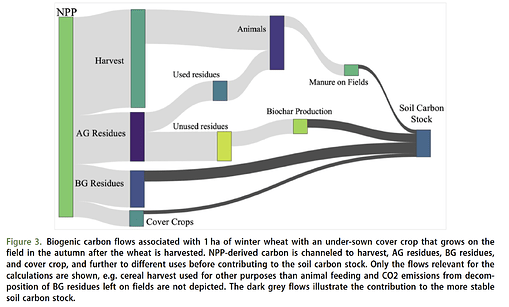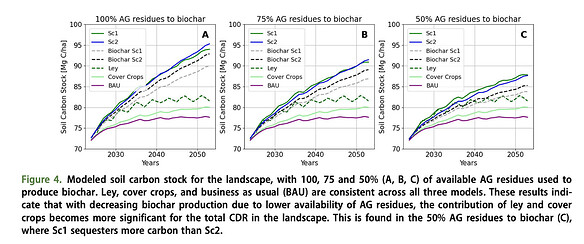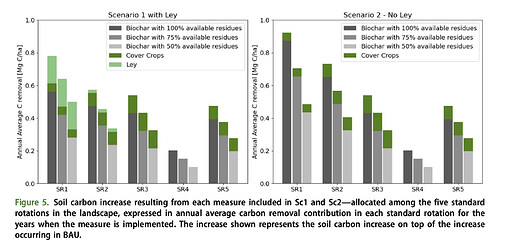Carbon removal potentials in agricultural systems – participatory scenario modeling with farmers in Sweden
This week, we look closer at the paper published in Carbon Management. The study was led by Andreas Rehn, from the Department of Space, Earth and Environment of Chalmers University of Technology in Gothenburg, in Sweden.
Increasing soil organic carbon (SOC) in agriculture can contribute to climate change mitigation by removing carbon dioxide from the atmosphere while bringing additional co-benefits like higher crop yields. However, because of the high complexity of soils and soil carbon dynamics, the effects of soil carbon management are highly context-dependent and influenced by multiple factors such as soil complexity, climatic conditions, and land-use history.
SOC levels are determined by the balance between carbon inputs (e.g., biomass, organic amendments) and carbon losses through biological decomposition. In Sweden, a significant amount of above-ground residues from agriculture practices is left on the fields: as such, most of the carbon in these residues is emitted into the atmosphere through decomposition with small effects on SOC levels and hence on soil carbon storage in agricultural soils.
Focusing on the case of Sweden, where arable land covers approximately one-third of the land area, this article introduces a framework for landscape-level assessment of climate change mitigation in agriculture that accounts for existing land uses, soil carbon stocks, and farmers’ preferences concerning specific mitigation options. Engaging farmers in a collaborative process, the authors find that biochar as soil amendment, cover crops, and (an increased) cultivation of ley crops in crop rotations are the preferred measures.
Farmers’ input concerning soil carbon management measures was used to develop two scenarios. In the first - SC1 - leys and cover crops are included in the five standard rotations according to farmers’ interest and adopting the maximum agronomic potential. Biochar is produced using the currently non-utilized AG residues from cereal and rapeseeds as feedstock; In the second scenario - SC2 - cover crops and biochar production are the same as in SC1, but ley crops are not included in annual rotations. The availability of agricultural residues is modeled at three levels: 100%, the theoretical maximum, and 75 and 50%, reflecting practical limitations in collecting residues for pyrolysis. Results show that both historical land use and current farming systems need to be considered when contemplating agricultural measures to increase soil carbon, given the key role of crop rotations on the potential of measures aimed at increasing SOC storage.
A wrap-up of the key insights from this study:
-
Soil organic carbon (SOC) management can help mitigate climate change by removing CO2 from the atmosphere and may increase agricultural yields.
-
The effectiveness of soil carbon measures is context-dependent and influenced by soil characteristics, climate, and land-use history.
-
SOC levels are shaped by the balance between carbon inputs and losses via decomposition; in Sweden, much of the carbon from agricultural residues is lost through decomposition, contributing little to long-term soil carbon storage.
-
Practices like cover crops, catch crops, and perennial grass-clover in crop rotations have shown significant potential for increasing SOC in Swedish agriculture.
-
A participatory approach involving farmers enhances the relevance of scenarios and helps build a sense of ownership/feasibility in implementing carbon removal practices.
Read the full paper here: Carbon removal potentials in agricultural systems – participatory scenario modelling with farmers in Sweden


